humans
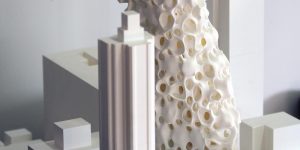
Buildings without People
Studio Architecture III (CZ)
Buildings without people are already an integral part of our cities, though often not architecturally integrated to them yet. These projects replace five iconic 20th-century buildings with 21st century typologies such as data centers or logistics hubs inside of which humans are unwelcome or, at best, inconvenient guests
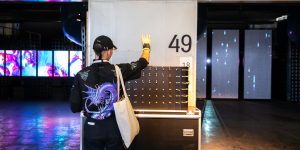
Groove – Motion as a Language
Studio 7.5 (DE)
This project investigates the communicative potential of reactive surfaces and focuses on the collaboration between humans and autonomous vehicles. The membrane perceives and reacts to the environment like a sea anemone. The aim of the project is to use these expressive possibilities to transmit processes and intentions of an autonomous system to the environment.
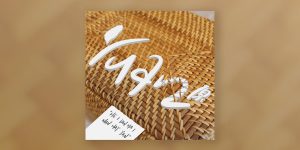
Yuan原
Mich Tsai (TW)
This interactive project offers audiences the opportunity to reflect on themselves, through reproducing traditional Formosan music via a perspective on the triangular relationship between machine, human and nature. Yuan not only represents Formosan musical culture, it also demonstrates the notion of ‘LOSS’ and the risk of cultural histories disappearing.
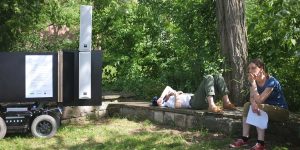
Relations – Experimental Radio Showcase
Bauhaus-Universität Weimar
In addition to the thematic exhibition "Shared Habitats," Bauhaus University, Weimar will present other projects from the departments of Experimental Radio, Media Environments, Human-Computer Interaction, and Product Design.
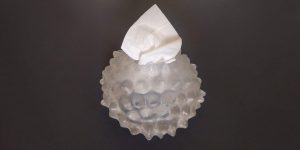
Probing the Planthroposcene: Excerpts from a Dis-service Society
Alexandra Toland (US/DE)
Can “ecosystem services” and disservices provided by plants be seen as phyto-technologies of multi-species societies? How are spaces of creative dissonance, resilience, and resistance created by outliers: pests, parasites, invasive species, and allergens? What moral agency do humans have in determining the assets and liabilities of plants during the environmental strains of the Anthropocene? These questions are explored through an assemblage of objects, images, and recordings featuring plants as protagonists in natural habitats along roadsides, probing what Natasha Myers (2016) has dubbed the “Planthroposcene.”

FUNGUAGE ROOM
Koichi Araake (JP), Eiji Iwata (JP), Michinari Kono (JP), Norio Sasaki (JP), Asa Ichinozuka (JP), BANDAI NAMCO Research Inc. (JP), Hakuhodo Inc. (JP), Ars Electronica Futurelab (AT)
How could a language between humans and objects look like? Maye like FUNGAUGE - a new form of language enabling humans and non-living material to communicate more effectively with each other. BANDAI NAMCO Group, a globally leading entertainment company, and Hakuhodo have been researching this question since 2017, together with the Ars Electronica Futurelab, building on the idea that FUN could be a universal language that transcends cultural boundaries. The current research progress and background is shown in a FUNGUAGE ROOM, where the new language is installed in a real-life environment.
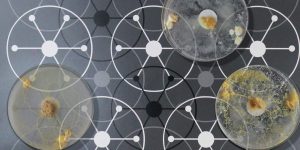
Slime Mold Chess
Hakan Lidbo (SE)
This game is a collaboration between one of our planet’s most simple forms of intelligence and the most advanced. Slime mold and humans.
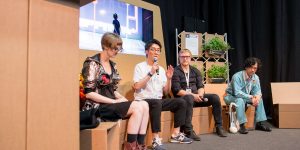
FUNGUAGE - the FUN spirit in the future
Panel Discussion
What is the future of playfulness? How can we work on this future in the present, in the midst of our current societies? At the Panel Discussion FUNGUAGE - the FUN spirit in the future, these questions will be examined, using the example of a shared research project between BANDAI NAMCO Research Inc., Hakuhodo and the Ars Electronica Futurelab - FUNGUAGE. FUNGUAGE is a new form of language that enables humans and non-living material to communicate more effectively, creating a speculative scenario that uses FUN as a universal language, transcending cultural boundaries.
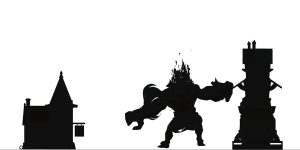
Shadow of Original Sin
Xu Dongyan (CN), Guo Biyu (CN), Zhong Manting (CN), Zhengren Chen (CN)
Shadow of Original Sin is an interactive installation that explores human original sin. Where there’s light, there must be shadows. From the shadows, we can always see the dark side of human nature. The inside of the device will reflect the original sin inside of you as a human being. In the installation, the shadow of the audience will turn into a monster. The monster is completely controlled by the audience, and what the monster will react to depends on the audience. The subconscious evil of human nature is entirely exposed.


